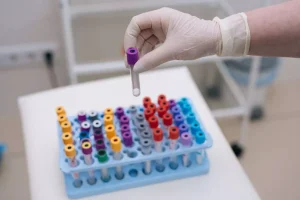
Foundational to this practice is the understanding of threat and defensive physiology versus safety and restorative physiology. Undoubtedly, the shadow network is reflected in our threat physiology—from our DNA to our predictive codes to our traumatic memories to our suppressions and repressions—and plays a large part in behavior, illness, disease, and aging. Most of us hate to deal with negative thoughts or emotions—it just doesn’t feel good. We will compartmentalize thoughts and stuff emotions away. These are our thought suppressions and emotional repressions that also bias the system towards threat physiology. Here we’re talking about movies, music, websites… Are we on a mental diet of junk food or health food?
Article Contents
- This is the type of spiritually maladapted behavior that we typically exhibit in active alcoholism.
- It is important that when we embark upon this quest to alleviate our spiritual malady that we are not too harsh on ourselves.
- Thankfully, the “spiritual malady” is no longer a “missing piece” of Step One for me.
- But for food addicts—because of their body’s “allergy” to sugar or processed foods—one Christmas cookie leads to a dozen.
- The difference with CR is that we specifically acknowledge Jesus Christ as the Higher Power that can restore us.
My intention was to build on that foundation and talk further about the evolutionary molecular and cellular mechanisms that exist in us today and determine whether we are diseased and ill versus healthy and well. My trajectory was to move from physical to mental to social, and then to spiritual illness and disease. However, given the times we are in, I find myself compelled to vault forward to the spiritual. An inventory is just a list—in our case a list of people and events that have contributed to our issue.

How Can I Heal My Soul?
Many people are initially turned off to the idea of the program because they believe it preaches religion and God, and many addicts and alcoholics have no desire to pursue a religious answer. But the beauty of the 12-steps is that they are spiritually based as opposed to religious. What that means is that all that is required is the belief in a power greater than yourself. There is no church you must attend or strict practices you must adhere to in organized worship of said higher power, it is a completely individual and personal experience. Table 2 summarizes mean differences by trauma group in potential mediator and outcome variables.

Spiritual Struggle, Trauma, and PTSD
- The present study aims to advance understanding of how spiritual struggle relates to PTSD symptoms.
- Spiritual struggle consists of maladaptive religious cognitions about the cause of, responsibility for, and future implications of stressful events, paralleling secular cognitions known to be factors in the development and maintenance of PTSD symptoms (e.g., Brewin & Holmes, 2003).
- This complacency can then lead to a sense of entitlement which is extremely dangerous for people in recovery.
- Finding a Higher Power is an essential part of Alcoholics Anonymous, but what if you don’t believe in God?
But first, it’s crucial that you understand the difference between a spiritual experience and a religious one. While I could go on forever on the differences between these two ideas, I’ll keep it as simple as possible. Bryan was born define spiritual malady in Philadelphia and remains an ardent supporter of Philadelphia sports. After attending FSU and FAU where he majored in writing, Bryan ventured out to follow in the footsteps of his idols, running straight into drug addiction.
Inside The Alcoholic Brain
Independent samples t-tests were performed to compare the group that appraised at least one event as a trauma to the group that did not on demographic and the normally-transformed study variables. The trauma and non-trauma groups did not significantly differ in age, gender, or racial/ethnic identification. The trauma group scored higher than the non-trauma group on PTSD symptoms at both time points and on spiritual struggle at Time 2. There was a trend toward a significant difference between the groups for the subscales of spiritual struggle.
Differences by Trauma group
His struggle reminds us that we may face spiritual malady despite our professional success or achievements. Our emotional response to criticism, stress, trauma, and grief can build up negative emotions and lead to spiritual malady. Additionally, lack of self-care and self-compassion, including poor eating habits, not getting enough rest, and neglecting basic needs are critical contributors.
What are 3 body parts affected by alcohol?
- Fear and resentment dominated my thoughts and I made decisions based on self which caused me harm and harmed others.
- Shameful secrets can fester in the dark recesses of our minds and inflame our hearts with recrimination and resentment.
- The way humans think is on a spectrum of self-centeredness and god-centeredness.
- For example, AA rooms offer fellowship and support and provide a structure that can help keep you sober.
- Here we’re talking about movies, music, websites… Are we on a mental diet of junk food or health food?
If we do not get spiritually connected with meditation or prayer with a power greater than us it will bring us closer and closer to that drink or drug. In sobriety, if we are self-reliant we usually end up using anything that will make us feel good externally excessively. The thoughts we have as alcoholics are often insidious in such a way that we can’t tell what is true or false. The AA Big Book talks about this delusion we develop in active addiction.

Demonic Reappraisal does not mediate the relationship between trauma exposure and PTSD symptoms, controlling for baseline PTSD symptoms. Punishing God Reappraisal as partial mediator of the relationship between trauma exposure and PTSD symptoms, controlling for baseline PTSD symptoms. Spiritual Discontent as partial mediator of the relationship between trauma exposure and PTSD symptoms, controlling for baseline PTSD symptoms. The spiritual struggle scale and subscales were tested separately as mediators in models with trauma group as the predictor and PTSD symptomatology as the outcome, controlling for the level of PTSD symptoms reported at Time 1. Mediation analyses were conducted using bootstrapping, a nonparametric statistical procedure that uses repeated sampling to estimate and provide a confidence interval for the indirect effect of the independent variable (IV) on the dependent variable (DV) through the mediator (M). Bootstrapping also provides coefficients and significance tests for the direct effects of the IV on the M (a), the M on the DV (b), and the IV on the DV through the M (c’); the total effect of the IV on the DV (c); and the partial effect of the control variable on the DV.

Leave a Reply